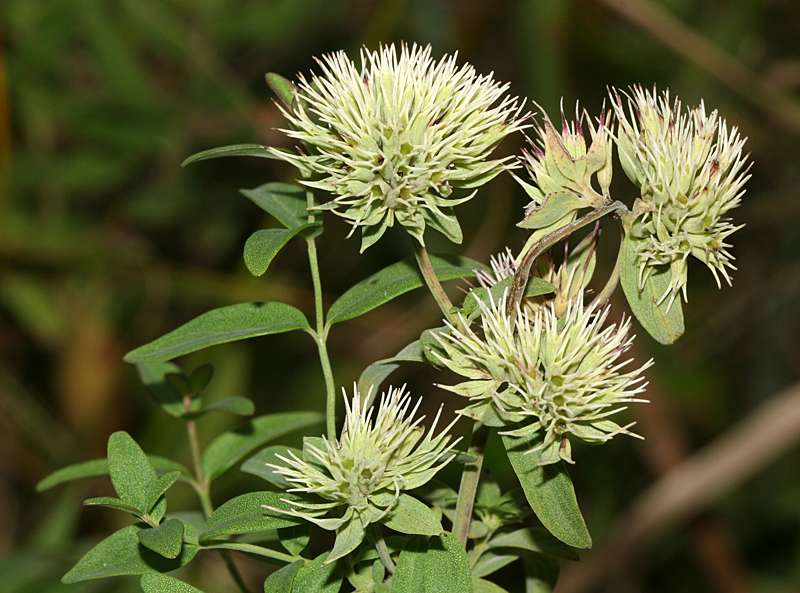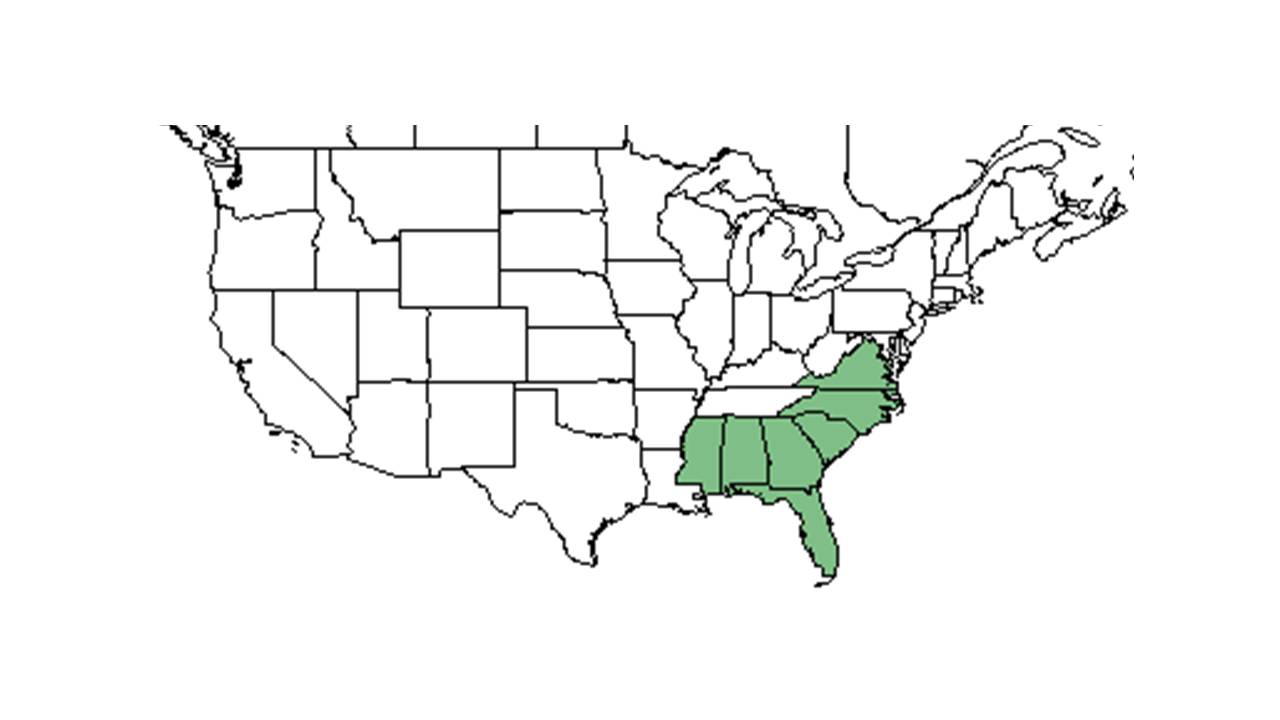Difference between revisions of "Pycnanthemum flexuosum"
(→Description) |
HaleighJoM (talk | contribs) (→Ecology) |
||
| (39 intermediate revisions by 9 users not shown) | |||
| Line 3: | Line 3: | ||
{{taxobox | {{taxobox | ||
| name = Pycnanthemum flexuosum | | name = Pycnanthemum flexuosum | ||
| − | | image = | + | | image = Pycn_flex.jpg |
| − | | image_caption = | + | | image_caption = Photo taken and permission granted by Jeff Pippen, [http://jeffpippen.com/plants/pycnanthemum.htm JeffPippen.com] |
| regnum = Plantae | | regnum = Plantae | ||
| divisio = Magnoliophyta – Flowering plants | | divisio = Magnoliophyta – Flowering plants | ||
| Line 15: | Line 15: | ||
| binomial_authority = (Walter) Britton, Sterns & Poggenb. | | binomial_authority = (Walter) Britton, Sterns & Poggenb. | ||
| range_map = PYCN_FLEX_dist.jpg | | range_map = PYCN_FLEX_dist.jpg | ||
| − | | range_map_caption = Natural range of ''Pycnanthemum flexuosum'' from USDA NRCS [http:// | + | | range_map_caption = Natural range of ''Pycnanthemum flexuosum'' from USDA NRCS [http://plants.usda.gov/core/profile?symbol=PYFL Plants Database]. |
}} | }} | ||
| + | |||
| + | Common names: Appalachian mountainmint, Savanna mountain-mint | ||
| + | ==Taxonomic notes== | ||
| + | Synonyms: ''Pycnanthemum hyssopifolium'' Bentham; ''Koellia hyssopifolia'' (Bentham) Britton; ''Koellia hugeri Small | ||
| + | |||
==Description== | ==Description== | ||
<!-- Basic life history facts such as annual/perrenial, monoecious/dioecious, root morphology, seed type, etc. --> | <!-- Basic life history facts such as annual/perrenial, monoecious/dioecious, root morphology, seed type, etc. --> | ||
| − | + | "Herbaceous perennials with elongate rhizomes and erect, quadrangular freely branched stems. Inflorescence compact cymules, often head-like, arranged in thryses or terminal at the ends of branches. Calyx 5-toothed, zygomorphic to actinomorphic; corolla zygomorphic, 2-lipped, upper entire or notched, lower 3-lobed. Stamens 4, usually exserted; stigmas 2-clet, exserted."<ref name="Radford et al 1964">Radford, Albert E., Harry E. Ahles, and C. Ritchie Bell. Manual of the Vascular Flora of the Carolinas. 1964, 1968. The University of North Carolina Press. 918. Print.</ref> | |
| + | |||
| + | "Plant canescent; stems 4-11 dm tall, the angles sharp to rounded. Leaves elliptic to elliptic-lanceolate, 1.5-5 cm long, 3-15 mm wide, acute to obtuse, crenate with 1-4 teeth on each margin, rarely entire, base cuneate to rounded; petioles 0.5-5 mm long. Inflorescence head-like, flat-topped to high-domed corymb, each cymules 2-4 cm broad, becoming somewhat open in fruit; bracts canescent, aristate, often whitened. Calyx slightly zygomorphic , tube 4-4/5 mm long, teeth usually white, acicular, erect to spreading, 2.3-3.3 mm long; corolla white to lavender, 4-6 mm long. Mericarps dark brown, 1-1.3 mm long, oblong-ovoid, long bearded at apex."<ref name="Radford et al 1964"/> | ||
==Distribution== | ==Distribution== | ||
| − | + | It is found in moist to wet pinelands, pocosin margins, savannas, and bogs.<ref name="Nelson 2006"/> | |
==Ecology== | ==Ecology== | ||
===Habitat=== <!--Natural communities, human disturbed habitats, topography, hydrology, soils, light, fire regime requirements for removal of competition, etc.--> | ===Habitat=== <!--Natural communities, human disturbed habitats, topography, hydrology, soils, light, fire regime requirements for removal of competition, etc.--> | ||
| + | In the Coastal Plain in Florida and Georgia, ''P. flexuosum'' can be found in low pinelands near pond edges, swales bordering cypress-gum swamps, open annually burned pine stands, well drained slopes, and in flats between the hills of longleaf pine forests.<ref name="FSU Herbarium">Florida State University Robert K. Godfrey Herbarium database. URL: [http://herbarium.bio.fsu.edu http://herbarium.bio.fsu.edu]. Last accessed: July 2015. Collectors: Loran C. Anderson, Ed Keppner, Lisa Keppner, R. A. Norris, Robert K. Godfrey, Steve L. Orzell, R. F. Doren. States and Counties: Florida: Bay, Jefferson, Leon, Wakulla, Washington. Georgia: Grady, Thomas. Compiled by Tall Timbers Research Station and Land Conservancy.</ref> It can also be found in drying loamy sand of grassy roadsides, floodplain clearings along rivers, open marshy areas, boggy areas, fields, and a swale in a burned and cutover upland longleaf pine savanna.<ref name="FSU Herbarium"/> Associated species include pine, oak, cypress, sweetgum, and longleaf pine.<ref name="FSU Herbarium"/> | ||
| + | |||
| + | ''Pycnanthemum flexuosum'' is an indicator species for the Upper Panhandle Savannas community type as described in Carr et al. (2010).<ref>Carr, S.C., K.M. Robertson, and R.K. Peet. 2010. A vegetation classification of fire-dependent pinelands of Florida. Castanea 75:153-189.</ref> | ||
| + | |||
===Phenology=== <!--Timing off flowering, fruiting, seed dispersal, and environmental triggers. Cite PanFlora website if appropriate: http://www.gilnelson.com/PanFlora/ --> | ===Phenology=== <!--Timing off flowering, fruiting, seed dispersal, and environmental triggers. Cite PanFlora website if appropriate: http://www.gilnelson.com/PanFlora/ --> | ||
| − | + | This species has been observed to flower from June through September.<ref name="Nelson 2006">Nelson, Gil. Atlantic Coastal Plain Wildflowers: A Field Guide to the Wildflowers of the Coastal Regions of Virginia, North Carolina, South Carolina, Georgia, and Northeastern Florida. Guilford, CT: FalconGuide, 2006. 62. Print.</ref><ref>Nelson, G. [http://www.gilnelson.com/ PanFlora]: Plant data for the eastern United States with emphasis on the Southeastern Coastal Plains, Florida, and the Florida Panhandle. www.gilnelson.com/PanFlora/ Accessed: 19 MAY 2021</ref> | |
| + | <!--===Seed dispersal===--> | ||
| + | <!--===Seed bank and germination===--> | ||
| − | |||
| − | |||
===Fire ecology=== <!--Fire tolerance, fire dependence, adaptive fire responses--> | ===Fire ecology=== <!--Fire tolerance, fire dependence, adaptive fire responses--> | ||
| − | ===Pollination=== | + | Populations have been known to persist through repeated annual burning.<ref>Platt, W.J., R. Carter, G. Nelson, W. Baker, S. Hermann, J. Kane, L. Anderson, M. Smith, K. Robertson. 2021. Unpublished species list of Wade Tract old-growth longleaf pine savanna, Thomasville, Georgia.</ref> |
| − | === | + | <!--===Pollination===--> |
| − | ===Diseases and parasites=== | + | <!--===Herbivory and toxicology===<!--Common herbivores, granivory, insect hosting, poisonous chemicals, allelopathy, etc--> |
| − | ==Conservation and | + | <!--===Diseases and parasites===--> |
| − | == | + | |
| + | ==Conservation, cultivation, and restoration== | ||
| + | |||
| + | ==Cultural use== | ||
==Photo Gallery== | ==Photo Gallery== | ||
| + | <gallery widths=180px> | ||
| + | </gallery> | ||
==References and notes== | ==References and notes== | ||
| − | |||
Latest revision as of 14:33, 15 July 2022
| Pycnanthemum flexuosum | |
|---|---|

| |
| Photo taken and permission granted by Jeff Pippen, JeffPippen.com | |
| Scientific classification | |
| Kingdom: | Plantae |
| Division: | Magnoliophyta – Flowering plants |
| Class: | Magnoliopsida – Dicotyledons |
| Order: | Lamiales |
| Family: | Lamiaceae ⁄ Labiatae |
| Genus: | Pycnanthemum |
| Species: | P. flexuosum |
| Binomial name | |
| Pycnanthemum flexuosum (Walter) Britton, Sterns & Poggenb. | |

| |
| Natural range of Pycnanthemum flexuosum from USDA NRCS Plants Database. | |
Common names: Appalachian mountainmint, Savanna mountain-mint
Contents
Taxonomic notes
Synonyms: Pycnanthemum hyssopifolium Bentham; Koellia hyssopifolia (Bentham) Britton; Koellia hugeri Small
Description
"Herbaceous perennials with elongate rhizomes and erect, quadrangular freely branched stems. Inflorescence compact cymules, often head-like, arranged in thryses or terminal at the ends of branches. Calyx 5-toothed, zygomorphic to actinomorphic; corolla zygomorphic, 2-lipped, upper entire or notched, lower 3-lobed. Stamens 4, usually exserted; stigmas 2-clet, exserted."[1]
"Plant canescent; stems 4-11 dm tall, the angles sharp to rounded. Leaves elliptic to elliptic-lanceolate, 1.5-5 cm long, 3-15 mm wide, acute to obtuse, crenate with 1-4 teeth on each margin, rarely entire, base cuneate to rounded; petioles 0.5-5 mm long. Inflorescence head-like, flat-topped to high-domed corymb, each cymules 2-4 cm broad, becoming somewhat open in fruit; bracts canescent, aristate, often whitened. Calyx slightly zygomorphic , tube 4-4/5 mm long, teeth usually white, acicular, erect to spreading, 2.3-3.3 mm long; corolla white to lavender, 4-6 mm long. Mericarps dark brown, 1-1.3 mm long, oblong-ovoid, long bearded at apex."[1]
Distribution
It is found in moist to wet pinelands, pocosin margins, savannas, and bogs.[2]
Ecology
Habitat
In the Coastal Plain in Florida and Georgia, P. flexuosum can be found in low pinelands near pond edges, swales bordering cypress-gum swamps, open annually burned pine stands, well drained slopes, and in flats between the hills of longleaf pine forests.[3] It can also be found in drying loamy sand of grassy roadsides, floodplain clearings along rivers, open marshy areas, boggy areas, fields, and a swale in a burned and cutover upland longleaf pine savanna.[3] Associated species include pine, oak, cypress, sweetgum, and longleaf pine.[3]
Pycnanthemum flexuosum is an indicator species for the Upper Panhandle Savannas community type as described in Carr et al. (2010).[4]
Phenology
This species has been observed to flower from June through September.[2][5]
Fire ecology
Populations have been known to persist through repeated annual burning.[6]
Conservation, cultivation, and restoration
Cultural use
Photo Gallery
References and notes
- ↑ 1.0 1.1 Radford, Albert E., Harry E. Ahles, and C. Ritchie Bell. Manual of the Vascular Flora of the Carolinas. 1964, 1968. The University of North Carolina Press. 918. Print.
- ↑ 2.0 2.1 Nelson, Gil. Atlantic Coastal Plain Wildflowers: A Field Guide to the Wildflowers of the Coastal Regions of Virginia, North Carolina, South Carolina, Georgia, and Northeastern Florida. Guilford, CT: FalconGuide, 2006. 62. Print.
- ↑ 3.0 3.1 3.2 Florida State University Robert K. Godfrey Herbarium database. URL: http://herbarium.bio.fsu.edu. Last accessed: July 2015. Collectors: Loran C. Anderson, Ed Keppner, Lisa Keppner, R. A. Norris, Robert K. Godfrey, Steve L. Orzell, R. F. Doren. States and Counties: Florida: Bay, Jefferson, Leon, Wakulla, Washington. Georgia: Grady, Thomas. Compiled by Tall Timbers Research Station and Land Conservancy.
- ↑ Carr, S.C., K.M. Robertson, and R.K. Peet. 2010. A vegetation classification of fire-dependent pinelands of Florida. Castanea 75:153-189.
- ↑ Nelson, G. PanFlora: Plant data for the eastern United States with emphasis on the Southeastern Coastal Plains, Florida, and the Florida Panhandle. www.gilnelson.com/PanFlora/ Accessed: 19 MAY 2021
- ↑ Platt, W.J., R. Carter, G. Nelson, W. Baker, S. Hermann, J. Kane, L. Anderson, M. Smith, K. Robertson. 2021. Unpublished species list of Wade Tract old-growth longleaf pine savanna, Thomasville, Georgia.